30 June, 2022
A lot of climbing terms can seem confusing and intimidating to beginners. What is the difference between a boulder and a crag?
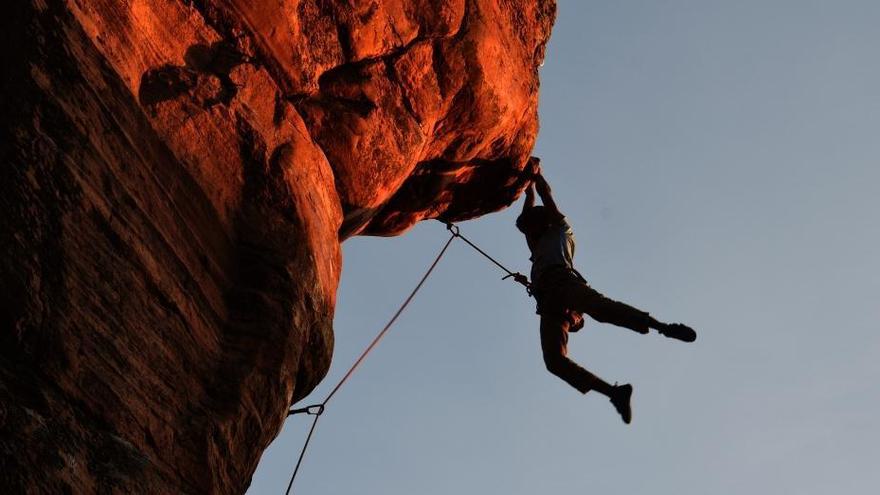
What does it mean to belay someone? And what the heck is a pitch?! This blog post will outline all the climbing terminology you need to know in order to get started in this amazing sport. So whether you're just starting out or are looking for a refresher, read on for definitions of some of the most common climbing words and phrases!
There are a number of types or styles of climbing including trad climbing, sport climbing, soloing, ice climbing and bouldering.
Trad climbing: Trad climbing is short for traditional climbing. This type of climbing involves placing your own gear as protection against falls, rather than using pre-placed bolts.
Sport climbing: Sport climbing generally refers to climbs that have been bolted for protection. This means that there are already metal anchors in the rock face which the climbing rope can be clipped into.
Soloing: Soloing is climbing without a partner. This means that you are completely responsible for your own safety and protection.
Bouldering: Bouldering is a type of climbing that is usually done on smaller rocks or boulder problems, without the use of ropes or harnesses. Bouldering can be done indoors or outdoors.
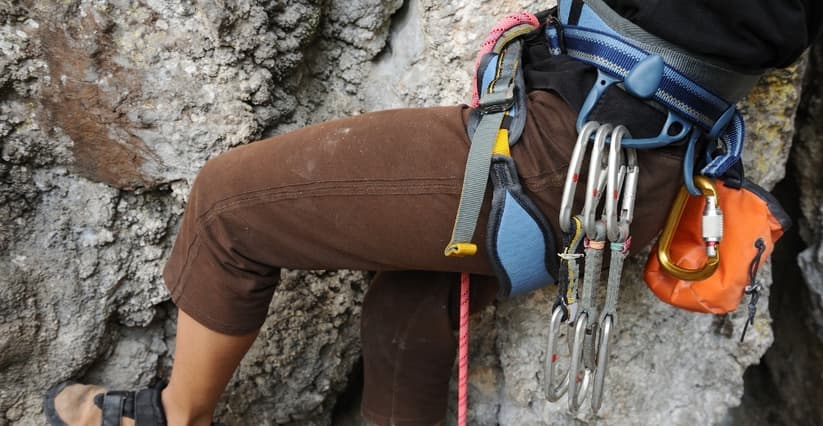
There is a range of climbing equipment that you will need in order to get started climbing. This includes items such as climbing shoes, chalk, a harness and carabiners. But do you know your nut from your hex from your gri-gri?
Climbing shoes: Climbing shoes are specially designed to help you grip the rock face. They are usually tight fitting and have sticky rubber soles.
Chalk: Chalk is used to help keep your hands dry when climbing. It also provides a little extra grip.
Harness: A climbing harness is a piece of equipment that goes around your waist and legs, and is used to attach you to the rope.
Carabiner: A carabiner is a metal loop with a gate that can be opened and closed. It is used to attach the climbing rope to your harness, or to anchor points on the rock face.
Nut: A nut is a small wedge of metal that is placed into cracks in the rock face. It is used as protection against falls.
Hex: A hex is a type of nut that is shaped like a hexagon.
Gri-gri: A gri-gri is a device that is used to belay climbers. It attaches to the climbing rope and can be used to brake in the event of a fall.
Pitch: A pitch is a length of climbing rope. It is usually around 60m long.
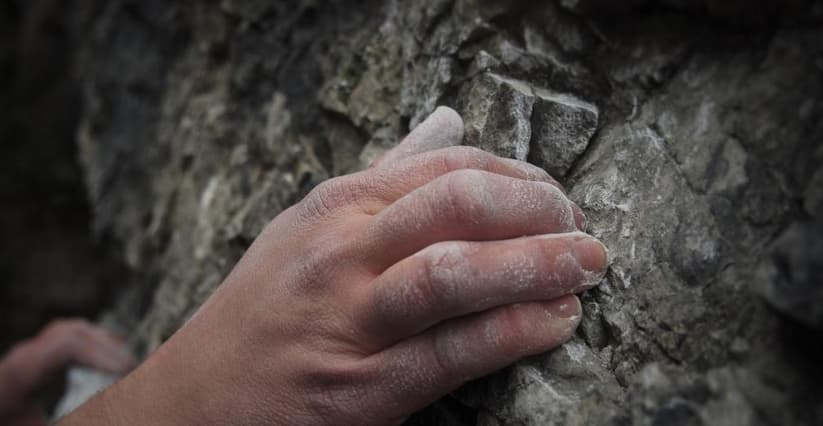
Do you know your jug from your bucket? When climbing, you will use a variety of different types of holds to help you make your way up the rock face. Here are some of the most common climbing holds:
Jug: A jug is a large, easy to hold onto type of climbing hold.
Bucket: A bucket is a big, open hold that you can get your whole hand around.
Crimp: A crimp is a small, sharp hold that you can only grip with the tips of your fingers.
Pinch: A pinch is a hold that you grip between your thumb and finger.
Undercut: An undercut is a hold that has been cut away from the rock face, making it difficult to hold onto.
Bomber: A bomber hold is a large, secure hold that you can trust to support your weight.
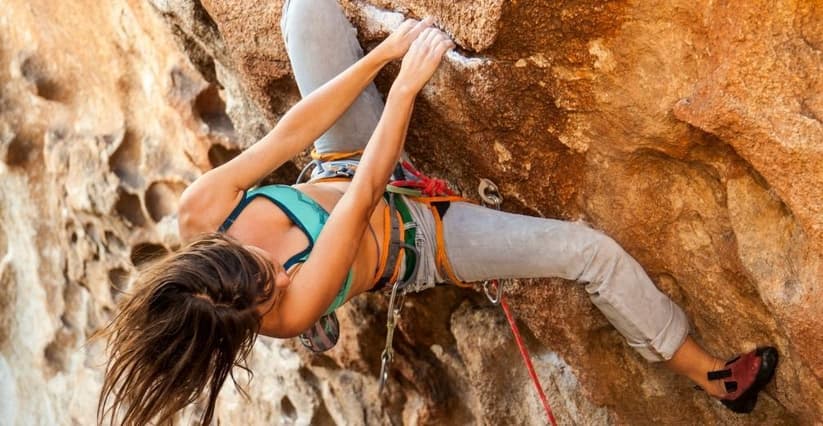
Climbing moves resemble a dance more than anything else. You need to be smooth, efficient and in control in order to make your way up the rock face. Here are some of the most common climbing moves:
Smear: A smear is a climbing move where you use the friction of your climbing shoe against the rock face to help you move upwards.
Lock-off: A lock-off is a climbing move where you use your arms to ‘lock’ your body in place on the rock face. This move is often used when climbing overhangs.
Dyno: A dyno is a dynamic climbing move where you jump up to reach a hold that is out of your normal range.
Flag: A flag is a climbing move where you use one of your legs to ‘flag’ out to the side in order to help you balance on the rock face.
Layback: A layback is a climbing move where you use your arms and legs to ‘lay back’ against the rock face. This move is often used on steep climbs.
Egyptian: An Egyptian is a climbing move where you hang from the rock face with your arms and legs in a straight line, resembling an Egyptian hieroglyph.
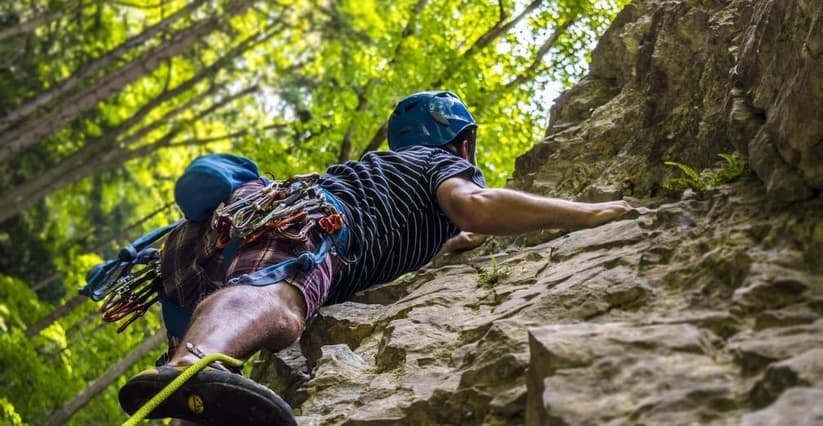
Climbing grades are used to rate the difficulty of climbs. The two most common grading systems are the Yosemite Decimal System (YDS) and the British climbing grading system. These adjectival grades tend to give an overall difficulty of a climb.
The Yosemite Decimal System rates climbs from class I to class V, with the easiest being class I and the hardest being class V.
The British climbing grading system uses a number of different adjectives to rate climbs, from easy (E) (barely a climb) to very severe (VS) or hard very sever (HVS).
After you've planned your climb from the overall difficulty, you then get into technical grades. These range from 4a, 4b, 4c, 5a, 5b, 5c, 6a, 6b, 6c, 7a and 7b with the difficulty increasing as the number / letter combo increases.
One should hope that by the time you get to an VS 6a...you should know your laybacks from your crimps.
Now that you know some of the basic climbing terms, you're one step closer to getting out there and enjoying this great sport! So what are you waiting for? Get climbing!
Read more on how to get into bouldering in this article - click here or view all climbing content here.

Outside & Active is the home for those who love the outdoors. Our mission is to inspire, inform and educate people about being active outdoors in a fun, safe and sustainable way. We provide inspiration, kit, tech and advice on adventure, camping, climbing, cycling, hiking, running water and winter.
Most recent articles by Outside & Active

Brooks supports trail runners to defy limits and empower their trail runs with the new Cascadia 18. The adaptable Cascadia combines DNA Loft v2 cushioning with TrailTack Green grip and a durable upper mesh to handle all terrains, providing necessary comfort and underfoot security on each surface.

Connectivity makes eBiking more customised, convenient and secure.

Various app solutions, interfaces and services as the next step for the eBike experience of tomorrow
Most recent articles in CLIMBING

Frankie McMillan. You might recognise this name since he has been featured in numerous national print and television news programmes over past year, here in the UK, across Europe and even Worldwide, for his recent success in trekking to Everest Base Camp, record-breaking summit of Mount Olympus and completing 214 Wainwrights challenge.

Did you miss out on attending this year's National Outdoor Expo? Or simply feeling the blues from the show and want even more EXCLUSIVE content? The National Outdoor PodShow is the one-stop-shop for those who love the outdoors.

I recently visited the recently opened Parthian Climbing Centre in Wandsworth to try out their world class climbing experience. Having not climbed for over 15 years, this is my review of how it went...